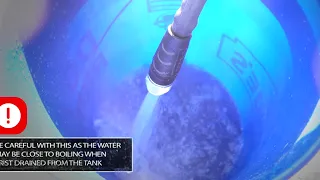Starting out in plumbing (or any trade) can feel overwhelming, especially when deciding which tools you really need from day one. While there’s no universal rulebook, some essentials will serve you on most job sites. Below are nine picks that cover a range of needs, from measuring and cutting to gripping and leveling. The tenth is up to you – read on to see what might round out your starter kit.
1) Tape Measure
Accuracy matters, whether you’re cutting pipe or laying out fixtures. A reliable tape measure with a sturdy blade and easy-to-read markings (preferably with both standard and fractional increments) is crucial. Look for one that stands out several feet without bending—it helps when you’re working solo.
2) Adjustable Wrench and Pliers
You’ll need at least one medium-sized adjustable wrench plus a pair of adjustable pliers. The ability to open wide means you can tackle various bolt sizes. Some pliers have jaws that adapt quickly to large nuts, letting you work in tight or awkward spaces.
3) Multi-Bit Screwdriver
A good multi-bit or 10-in-1 screwdriver saves you from juggling multiple drivers. Look for one that includes:
- Two sizes of flat-head tips
- Two sizes of Phillips tips
- Nut driver heads (1/4-inch and 5/16-inch)
- Possibly star (Torx) bits
4) Sturdy Tool Bag
A well-built tool bag or backpack keeps you organized and ready on the go. Seek one with multiple pockets to separate wrenches, screwdrivers, tape measures, and any smaller items like bits or a mini-flashlight. If your bag stands upright and doesn’t collapse, it’s easier to spot what you need without digging around.
5) Flashlight
Even if you typically work on well-lit sites, you’ll eventually deal with dim corners, under-sink cabinets, crawl spaces, and other shadowy spots. A compact, bright LED flashlight can be a lifesaver. Some come with swivel heads or built-in clips for hands-free use.
6) Pipe Wrench
At least one small or medium pipe wrench is essential for plumbing tasks such as loosening and tightening threaded fittings. As you advance in your career, you can add larger sizes or specialty wrenches. But starting out, a single 10- or 12-inch wrench gets you through many basic jobs.
7) Level
Even a short torpedo level helps you ensure pipes have the correct slope, or that fixtures are mounted squarely. Many come with multiple vials (0°, 45°, and 90°) plus a magnetic edge. This keeps it stable on metal surfaces and easy to read.
8) Hand Saw
A dependable hand saw (or hacksaw, depending on your work) cuts through wood, PVC, or other materials when power tools aren’t an option. If you’re frequently cutting plastic pipe, a smaller-purpose PVC saw might do the trick. Keep your blade fresh; a dull saw wastes time and makes crooked cuts.
9) More Grips: Second Pair of Adjustable Pliers or Raptor-Style Wrench
Sometimes you need to hold one fitting while turning another. Having two adjustable pliers or an additional raptor-style wrench is invaluable. Each can handle different sizes or shapes, letting you lock down a pipe or bolt securely while you manipulate the other side.
10) The “Wildcard” (You Decide)
Some new plumbers might prioritize a hammer for framing braces, while others might want an offset toilet wrench, a mini cutters for copper, or a small inspection camera. Think about your typical jobs: do you handle more drains, install a lot of faucets, or fix leaks behind walls? Your tenth tool should fit the specific niche of your early work.
Remember, as you gain experience, your tool collection grows. You’ll discover personal preferences and brand loyalties. For now, these core items will keep you productive and prepared on nearly any job site.




